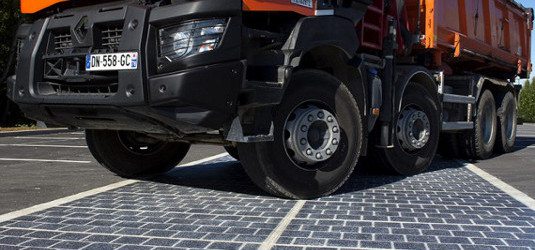
Colas
French energy minister Ségolène Royal inaugurated yesterday the construction of one kilometer of solar road in France’s northwestern department Orne.
The construction of the first solar road in Orne, France has now begun. French energy minister Ségolène Royal had traveled to Orne in the summer to inaugurate a manufacturing plant that will produce the so-called “Wattway” paving, made from solar PV.
On Monday, Royal made the same trip to inaugurate the construction of the first solar road. The solar road will be approximately 1km long and 2 m wide, covering an area of 2,800 m².
Colas, which is the French company behind the Wattway innovation, said the installation of the 1km solar road will be completed by December 2016.
Upon its completion, the solar road in Orne will be connected to the ENEDIS electricity distribution network and is expected to generate 17,963 kWh of electricity per day, which is enough for the public lighting of a town of 5,000 inhabitants, added Royal.
Furthermore, the energy ministry said, the site will enable firstly the evaluation of construction techniques for solar roads at large scale; and secondly, the assessment of the technology in terms of its behaviour over time under traffic and in terms of energy efficiency.
The project is funded by the French energy ministry, while in the summer Royal had also announced the mobilization of €5 million in state funding to support the development of the Wattway photovoltaic panel at the Société Nouvelle Areacem (SNA) factory, which is in the same area.
Royal has never hidden her enthusiasm for the Wattway innovation and her visits both in July and this week aim to showcase the government’s support for the solar roads concept. She has also publicly spoken of the development of the solar roads as a part of the country’s energy transition to green growth and, at the same time, creating new jobs.
Source: PV Magazine. Reproduced with permission.








